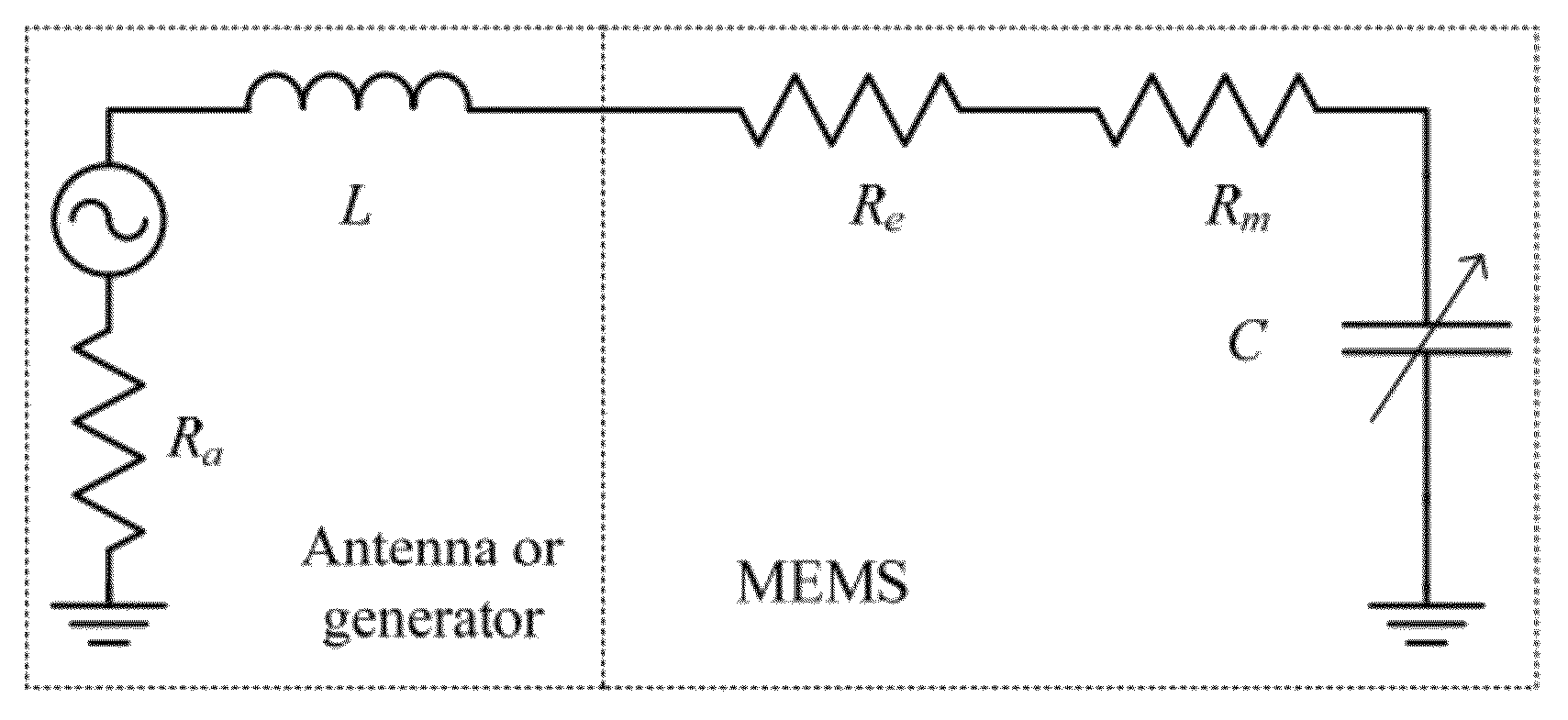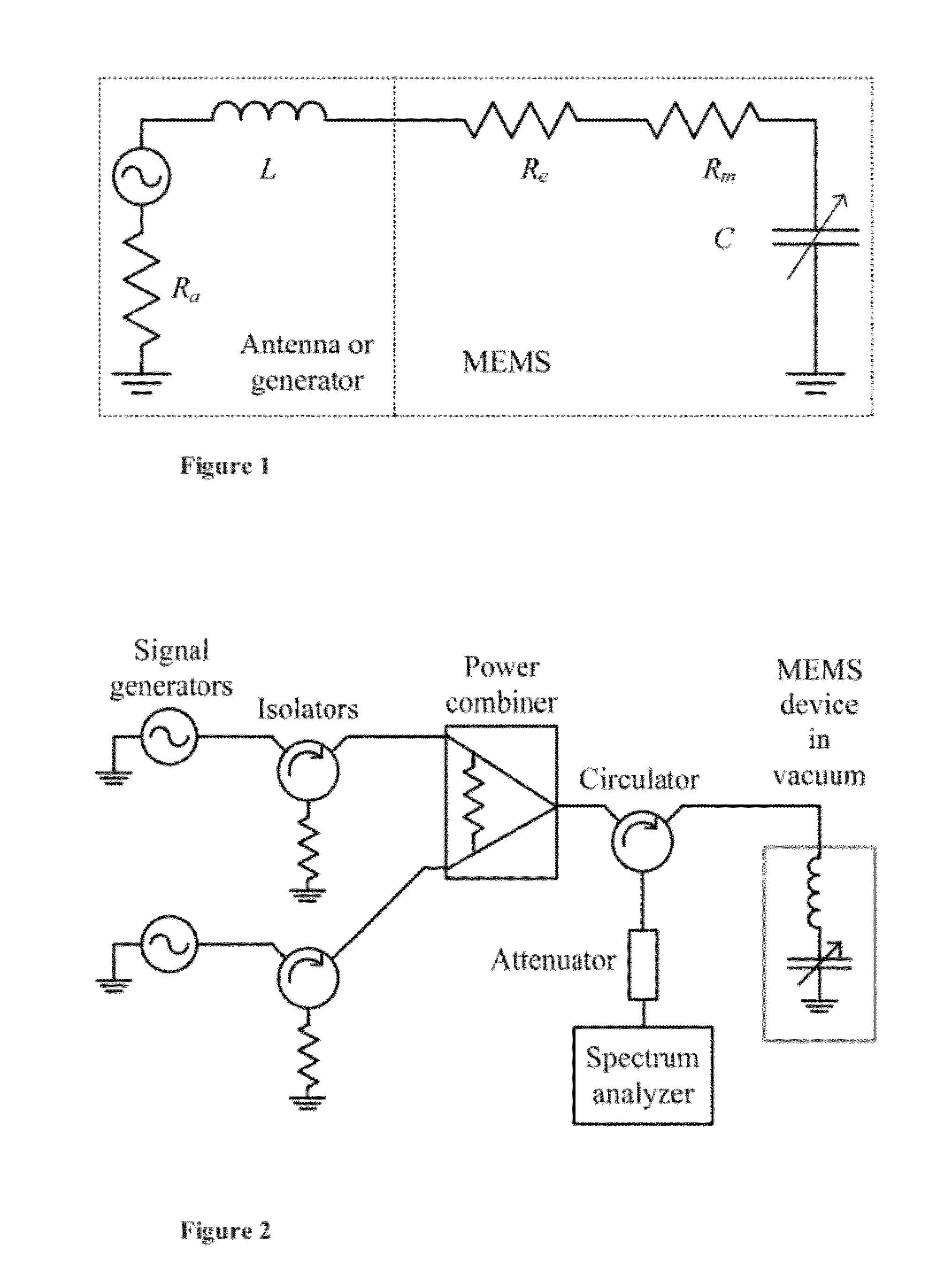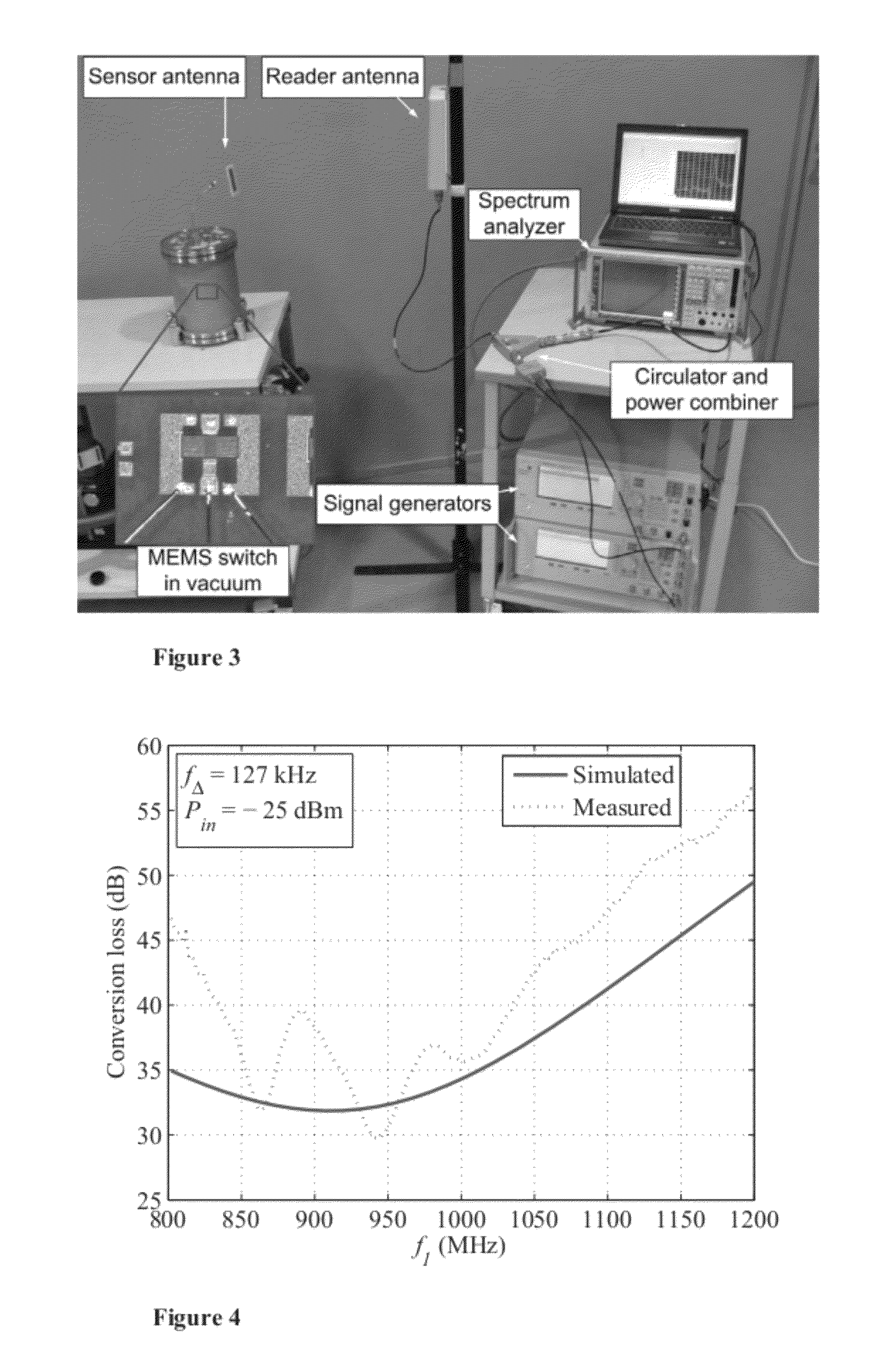Wireless MEMS sensor and method of reading the same
a technology of wireless sensors and sensors, applied in the direction of optical radiation measurement, instruments, wireless architecture usage, etc., can solve the problems of high cost and limitations of the battery life, active sensors, and high cost of wireless sensors, and achieve high frequency, long reading distance, and low manufacturing cost
- Summary
- Abstract
- Description
- Claims
- Application Information
AI Technical Summary
Benefits of technology
Problems solved by technology
Method used
Image
Examples
Embodiment Construction
[0033]According to an embodiment, the wireless sensor comprised a MEMS resonator and an antenna directly matched thereto.
[0034]The wireless sensor can be comprised in a single silicon chip.
[0035]In an embodiment, the sensor is a passive sensor and the single silicon chip does not include a power rectifier nor a power source.
[0036]The wireless sensor can also comprise a logic circuit.
[0037]In an embodiment, the wireless sensor comprises a logic implemented by a CMOS circuit manufacture on a single silicon chip together with the MEMS resonator and the antenna.
[0038]The MEMS resonator of the wireless sensor typically has three MEMS parameters: the mechanical quality factor, the mechanical resonance frequency, and the electrical resonance frequency. In an embodiment, at least one of the three parameters is made sensitive to the measured quantity. The measured quantity itself can be temperature, strain, air pressure or humidity, for instance.
[0039]In an embodiment, the wireless sensor is...
PUM
| Property | Measurement | Unit |
|---|---|---|
| frequency | aaaaa | aaaaa |
| frequency | aaaaa | aaaaa |
| frequency | aaaaa | aaaaa |
Abstract
Description
Claims
Application Information
 Login to View More
Login to View More - R&D
- Intellectual Property
- Life Sciences
- Materials
- Tech Scout
- Unparalleled Data Quality
- Higher Quality Content
- 60% Fewer Hallucinations
Browse by: Latest US Patents, China's latest patents, Technical Efficacy Thesaurus, Application Domain, Technology Topic, Popular Technical Reports.
© 2025 PatSnap. All rights reserved.Legal|Privacy policy|Modern Slavery Act Transparency Statement|Sitemap|About US| Contact US: help@patsnap.com



